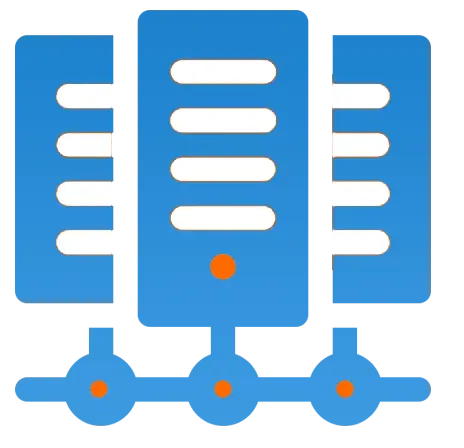Get 69% Off on Cloud Hosting : Claim Your Offer Now!
- Products
-
Compute
Compute
- Predefined TemplatesChoose from a library of predefined templates to deploy virtual machines!
- Custom TemplatesUse Cyfuture Cloud custom templates to create new VMs in a cloud computing environment
- Spot Machines/ Machines on Flex ModelAffordable compute instances suitable for batch jobs and fault-tolerant workloads.
- Shielded ComputingProtect enterprise workloads from threats like remote attacks, privilege escalation, and malicious insiders with Shielded Computing
- GPU CloudGet access to graphics processing units (GPUs) through a Cyfuture cloud infrastructure
- vAppsHost applications and services, or create a test or development environment with Cyfuture Cloud vApps, powered by VMware
- Serverless ComputingNo need to worry about provisioning or managing servers, switch to Serverless Computing with Cyfuture Cloud
- HPCHigh-Performance Computing
- BaremetalBare metal refers to a type of cloud computing service that provides access to dedicated physical servers, rather than virtualized servers.
-
Storage
Storage
- Standard StorageGet access to low-latency access to data and a high level of reliability with Cyfuture Cloud standard storage service
- Nearline StorageStore data at a lower cost without compromising on the level of availability with Nearline
- Coldline StorageStore infrequently used data at low cost with Cyfuture Cloud coldline storage
- Archival StorageStore data in a long-term, durable manner with Cyfuture Cloud archival storage service
-
Database
Database
- MS SQLStore and manage a wide range of applications with Cyfuture Cloud MS SQL
- MariaDBStore and manage data with the cloud with enhanced speed and reliability
- MongoDBNow, store and manage large amounts of data in the cloud with Cyfuture Cloud MongoDB
- Redis CacheStore and retrieve large amounts of data quickly with Cyfuture Cloud Redis Cache
-
Automation
Automation
-
Containers
Containers
- KubernetesNow deploy and manage your applications more efficiently and effectively with the Cyfuture Cloud Kubernetes service
- MicroservicesDesign a cloud application that is multilingual, easily scalable, easy to maintain and deploy, highly available, and minimizes failures using Cyfuture Cloud microservices
-
Operations
Operations
- Real-time Monitoring & Logging ServicesMonitor & track the performance of your applications with real-time monitoring & logging services offered by Cyfuture Cloud
- Infra-maintenance & OptimizationEnsure that your organization is functioning properly with Cyfuture Cloud
- Application Performance ServiceOptimize the performance of your applications over cloud with us
- Database Performance ServiceOptimize the performance of databases over the cloud with us
- Security Managed ServiceProtect your systems and data from security threats with us!
- Back-up As a ServiceStore and manage backups of data in the cloud with Cyfuture Cloud Backup as a Service
- Data Back-up & RestoreStore and manage backups of your data in the cloud with us
- Remote Back-upStore and manage backups in the cloud with remote backup service with Cyfuture Cloud
- Disaster RecoveryStore copies of your data and applications in the cloud and use them to recover in the event of a disaster with the disaster recovery service offered by us
-
Networking
Networking
- Load BalancerEnsure that applications deployed across cloud environments are available, secure, and responsive with an easy, modern approach to load balancing
- Virtual Data CenterNo need to build and maintain a physical data center. It’s time for the virtual data center
- Private LinkPrivate Link is a service offered by Cyfuture Cloud that enables businesses to securely connect their on-premises network to Cyfuture Cloud's network over a private network connection
- Private CircuitGain a high level of security and privacy with private circuits
- VPN GatewaySecurely connect your on-premises network to our network over the internet with VPN Gateway
- CDNGet high availability and performance by distributing the service spatially relative to end users with CDN
-
Media
-
Analytics
Analytics
-
Security
Security
-
Network Firewall
- DNATTranslate destination IP address when connecting from public IP address to a private IP address with DNAT
- SNATWith SNAT, allow traffic from a private network to go to the internet
- WAFProtect your applications from any malicious activity with Cyfuture Cloud WAF service
- DDoSSave your organization from DoSS attacks with Cyfuture Cloud
- IPS/ IDSMonitor and prevent your cloud-based network & infrastructure with IPS/ IDS service by Cyfuture Cloud
- Anti-Virus & Anti-MalwareProtect your cloud-based network & infrastructure with antivirus and antimalware services by Cyfuture Cloud
- Threat EmulationTest the effectiveness of cloud security system with Cyfuture Cloud threat emulation service
- SIEM & SOARMonitor and respond to security threats with SIEM & SOAR services offered by Cyfuture Cloud
- Multi-Factor AuthenticationNow provide an additional layer of security to prevent unauthorized users from accessing your cloud account, even when the password has been stolen!
- SSLSecure data transmission over web browsers with SSL service offered by Cyfuture Cloud
- Threat Detection/ Zero DayThreat detection and zero-day protection are security features that are offered by Cyfuture Cloud as a part of its security offerings
- Vulnerability AssesmentIdentify and analyze vulnerabilities and weaknesses with the Vulnerability Assessment service offered by Cyfuture Cloud
- Penetration TestingIdentify and analyze vulnerabilities and weaknesses with the Penetration Testing service offered by Cyfuture Cloud
- Cloud Key ManagementSecure storage, management, and use of cryptographic keys within a cloud environment with Cloud Key Management
- Cloud Security Posture Management serviceWith Cyfuture Cloud, you get continuous cloud security improvements and adaptations to reduce the chances of successful attacks
- Managed HSMProtect sensitive data and meet regulatory requirements for secure data storage and processing.
- Zero TrustEnsure complete security of network connections and devices over the cloud with Zero Trust Service
- IdentityManage and control access to their network resources and applications for your business with Identity service by Cyfuture Cloud
-
-
Compute
- Solutions
-
Solutions
Solutions
-
 Cloud
Hosting
Cloud
Hosting
-
 VPS
Hosting
VPS
Hosting
-
GPU Cloud
-
 Dedicated
Server
Dedicated
Server
-
 Server
Colocation
Server
Colocation
-
 Backup as a Service
Backup as a Service
-
 CDN
Network
CDN
Network
-
 Window
Cloud Hosting
Window
Cloud Hosting
-
 Linux
Cloud Hosting
Linux
Cloud Hosting
-
Managed Cloud Service
-
Storage as a Service
-
 VMware
Public Cloud
VMware
Public Cloud
-
 Multi-Cloud
Hosting
Multi-Cloud
Hosting
-
 Cloud
Server Hosting
Cloud
Server Hosting
-
 Bare
Metal Server
Bare
Metal Server
-
 Virtual
Machine
Virtual
Machine
-
 Magento
Hosting
Magento
Hosting
-
Remote Backup
-
 DevOps
DevOps
-
 Kubernetes
Kubernetes
-
 Cloud
Storage
Cloud
Storage
-
NVMe Hosting
-
 DR
as s Service
DR
as s Service
-
-
Solutions
- Marketplace
- Pricing
- Resources
- Resources
-
By Product
Use Cases
-
By Industry
- Company
-
Company
Company
-
Company
What are the Top Challenges We Face in Cloud Security?
Table of Contents
In this digitalization era, approximately 94% of businesses are concerned about cloud security, ranging from minor to severe. Enterprises rank misconfiguration (68%) as the top security risk to public clouds, followed by illegal access (58%), unprotected interfaces (52%), and account hijacking (50%).
Today in this blog, we’ll examine the most pressing cloud security challenges and issues. So, let’s come to the points directly.
1. Unauthorized Access:
Unlike on-premises equipment, cloud-based installations are available right away from the public Internet and are situated outside the network perimeter. While this is advantageous for customer and employee access to the infrastructure. It also makes it simpler for an attacker to get unauthorized access to cloud-based services used by a business.
Inadequately configured security or hacked credentials may give an attacker immediate access, possibly without the enterprise’s knowledge.
2. Insecure Interfaces and APIs:
Application programming interfaces (APIs) and interfaces of various kinds are regularly made available to customers by CSPs. These APIs are often well-documented to make them available to CSP customers.
However, this can cause issues if a customer has not sufficiently safeguarded the interfaces for their cloud-based infrastructure. The content produced for the customer can be used by a cybercriminal to identify and take advantage of potential methods for breaking into a company’s cloud infrastructure and obtaining sensitive data.
3. Accounts Hijacking:
These days, several peoples have weak security passwords such as reused passwords and the use of extremely weak passwords. Therefore, this problem enhances the impact of data stolen and phishing attacks since a single stolen password is used for several accounts.
Well, hijacking accounts is one of the most serious issues in cloud security. This is because businesses rely more on cloud-based infrastructure and applications for crucial business activities.
An attacker with access to an employee’s credentials might access crucial information or features, while compromised customer credentials would give the attacker full control of the victim’s online account. Additionally, cloud-based businesses generally struggle to identify and address these risks as effectively as on-premises technology.
4. Lack of Visibility:
Usually, the cloud-based resources of an organization are located outside of the corporate network. furthermore, they utilize infrastructure that is not owned by the company.
Because of this, many conventional network visibility techniques are no longer effective in cloud environments, and some businesses lack cloud-specific security capabilities. This may make it more difficult for a corporation to protect and manage its cloud-based resources.
5. External Data Sharing:
Well, the cloud is specially designed to host websites at ease and also to easily share data and resources. Besides, several clouds provide an option to invite a collaborator through email or to share a link. These links permit anyone with the URL to access the shared resources.
Honestly, the ease of data interchange is advantageous, but it can also pose a serious threat to cloud security. Controlling access to the shared resource becomes difficult when link-based sharing is used, which is a popular choice because it is simpler than personally inviting each intended collaborator.
A cybercriminal may guess the shared URL, forward it as part of a breach, or steal it directly, granting them access to the shared resource without authorization. Additionally, link-based sharing makes it impossible to revoke access to a shared link for just one recipient.
6. Insider Threats:
Insider threats are a significant security concern for any organization. A malevolent insider already has authorized access to a company’s network and certain of its key resources. Most attackers are discovered by attempting to get this level of access, making it difficult for an unprepared organization to notice a malevolent insider.
Even more difficult is finding a malevolent insider on the cloud. With cloud deployments, businesses lose control over their underlying infrastructure, making many conventional security solutions useless. This makes identifying malicious insiders considerably more difficult, especially given that cloud-based technology is typically vulnerable to security flaws and is instantly available from the public Internet.
7. Misconfiguration:
Cloud security settings that have been improperly configured regularly result in data breaches. Many businesses’ adoption of cloud security posture management tools is insufficient to safeguard their cloud-based infrastructure.
This is influenced by several factors. It might be difficult for businesses to guarantee that data is only accessible to authorized individuals because cloud infrastructure is designed to be simple to use and to enable data sharing. As a result of their limited access to and control over their infrastructure, businesses that rely on cloud-based infrastructure must rely on the security measures provided by their cloud service provider (CSP) to plan and secure their cloud installations.
Because many firms are unfamiliar with securing cloud infrastructure and typically have multi-cloud deployments, it is easy for a misconfiguration or security oversight to leave an organization’s cloud-based resources vulnerable to attackers.
Final Thought:
In the era of digitalization, everyone is switching to the cloud to promote their business and make it easily accessible. But, there are also a few challenges that they don’t have aware of. Here, we have mentioned a few top challenges that you may face in the cloud. And also, affect cloud security. Therefore, you should avoid making weak passwords, external data sharing, unauthorized access, and many more things. It will help you to be safe from becoming hacked or hijacked.
Recent Post

Stay Ahead of the Curve.
Join the Cloud Movement, today!
© Cyfuture, All rights reserved.
Send this to a friend

 Pricing
Calculator
Pricing
Calculator
 Power
Power
 Utilities
Utilities VMware
Private Cloud
VMware
Private Cloud VMware
on AWS
VMware
on AWS VMware
on Azure
VMware
on Azure Service
Level Agreement
Service
Level Agreement 


















